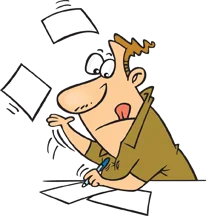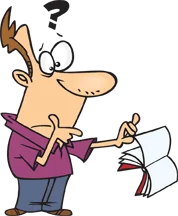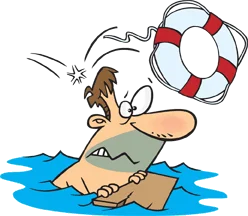Transactions Expanded Equation
Accounting Equation

Assets = Liabilities + Owner's Equity
Now let's use our Expanded Accounting Equation and get an overview of the types of transactions that can occur and their effects on our expanded equation.
The table below illustrates the four basic types of transactions represented by the letters (a) (b) (c) and (d) and their effects on our Expanded Accounting Equation.
A result of a transaction can:
- Increase both sides of the equation.
- Decrease both sides of the equation
- Increase and Decrease the same side of the equation.
Assets = | Liabilities + Owner's Equity | Types Of Transactions Examples-See Transaction Number in Table Below |
Left Side = | Right Side | |
| (a) Increase In Assets | (a) Increase In Liabilities or Owner's Equity | #1, #2, #4, #5, #10 |
| (b) Decrease In Assets | (b) Decrease In Liabilities or Owner's Equity | #3, #6, #7 |
| (c) Increase In One Type Of Asset | #8 | |
| (c) Decrease In Another Type Of Asset | #8 | |
| (d) Increase In One Type Of Liability or Owner's Equity | #9 | |
| (d) Decrease In Another Type Of Liabilty or Owner's Equity | #9 |
What does the table tell us ?
Transactions may require increases to both sides of the equation (left and right side both increase) – transaction type (a) ,
Transactions may require decreases to both sides of the equation (left and right side both decrease )- transaction type (b) ,
Transactions may require an increase and decrease on the same side of the equation (increase and decrease on the left side – transaction type (c).
Transactions may require an increase and decrease on the same side of the equation (increase and decrease on the right side - transaction type (d).
Regardless of the type of transaction, the Accounting Equation must always balance .
Did you also notice we made two entries for each of the example transactions illustrated in our table ? There’s that double entry thing again. The table also illustrates that by using double entry bookkeeping the dollar amount of the property will at all times equal the dollar amount of the property rights.
Transaction Analysis Using the Expanded Accounting Equation
Assets = Liabilities + Owner's Equity
Transactions | Assets = | Liabilities + | Owner's Equity | |||
Left Side = | Right Side | |||||
Increase | Decrease | Decrease | Increase | Decrease | Increase | |
| 1. ABC mows a client's yard and receives a check from the customer for $50 for the service provided. The asset cash is increased and the owner's equity is increased. | 50 | 50 | ||||
Type (a) Transaction Increases Both Sides of the Equation | ||||||
| 2. ABC purchases $100 worth of office supplies for inventory and stores them in their storage room. The office supply store gives them an invoice that allows them to pay for them in 15 days (on account). The asset office supplies is increased and the liabilities are increased. | 100 | 100 | ||||
Type (a) Transaction Increases Both Sides of the Equation | ||||||
| 3. ABC places an ad in the local newspaper receives the invoice from the supplier and writes a check for $25 to the newspaper. The asset cash is decreased and the owner's equity is decreased. | 25 | 25 | ||||
Type (b) Transaction Decreases Both Sides of the Equation | ||||||
| 4. ABC purchases five mowers for $10,000 and finances them with a note from the local bank. The asset equipment (mowers) is increased and the liabilities are increased. | 10,000 | 10,000 | ||||
Type (a) Transaction Increases Both Sides of the Equation | ||||||
| 5. ABC mows another customer's yard and sends the customer a bill (invoice) for $75 for the service they performed. They allow their customer 10 days to pay them for this service (on account). The asset amounts owed by customers is increased and the owner's equity is increased. | 75 | 75 | ||||
Type (a) Transaction Increases Both Sides of the Equation | ||||||
| 6. The owner of ABC needs a little money to pay some personal bills and writes himself a check for $500. The asset cash is decreased and the owner's equity is decreased. | 500 | 500 | ||||
Type (b) Transaction Decreases Both Sides of the Equation | ||||||
| 7. ABC pays the office supply company $100 with a check for the office supplies that they charged (promised to pay). The asset cash is decreased and the liabilities are decreased. | 100 | 100 | ||||
Type (b) Transaction Decreases Both Sides of the Equation | ||||||
| 8. ABC receives a check from the customer who they billed (invoiced) $75 for services and allowed 10 days to pay. The asset cash is increased and the asset amounts owed by customers is reduced. This is actually a swap of one type of asset for another. | 75 | 75 | ||||
Type (c) Transaction Increases and Decreases Left Side of the Equation | ||||||
| 9. ABC purchased some mulch for $60 and received an invoice from their supplier who allows them 15 days to pay. The mulch was used on a customer's yard. The liabilty amount owed a supplier is increased and the owner's equity is decreased. | 60 | 60 | ||||
Type (d) Transaction Increases and Decreases Right Side of the Equation | ||||||
| 10. ABC bills (prepares an invoice) the customer $80 for the mulch and mowing his yard and receives a check for $80 from the customer. The asset cash is increased and the owner's equity is increased. | 80 | 80 | ||||
Type (a) Transaction Increases Both Sides of the Equation | ||||||
| Total | 10,380 Increase | 700 Decrease | 100 Decrease | 10,160 Increase | 585 Decrease | 205 Increase |
| Net Changes | 9,680 Increase | 10,060 Increase | 380 Decrease | |||
| Total Net Changes | 9,680 Increase | 9,680 Increase | ||||
In the previous table, we entered all the transactions that affected Owner’s Equity under one heading; namely, Owner’s Equity and disregarded whether it was a revenue, expense, or draw item.
The following table is provided to help illustrate the effects that “Ma Capital’s Kids”, Revenue, Expense, and Draws have on Owner’s Equity (“Ma Capital”). Of course only the sample transactions that affect Owner’s Equity have been included.
Instead of recording transactions directly to “Ma Capital” (Owner’s Equity), proper bookkeeping actually uses her kids revenue, expense, and draws to record the increases and decreases to “Ma Capital” (Owner’s Equity) in order to provide us with the answers to how and why the owner’s claim to the business assets (property) increased or decreased.
Equity Table
Analysis of the Effects of Revenue, Expense, and Draws (Ma Capitals's Kids) on Owners Equity
| "Ma Capital" | Ma's Kid's" | ||||
Proper Recording Actually Uses Revenue, Expenses & Draws Instead of Owner's Equity | Original Recording | Proper Recording Uses | |||
| Transactions | Owner's Equity Right Side | Revenue | Expense | Draw | |
| Decrease | Increase | Revenue Increases Resulting in an Increase to Equity | Expenses Increase Resulting in a Decrease to Equity | Draws Increase Resulting in a Decrease to Equity | |
| 1. ABC mows a client's yard and receives a check from the customer for $50 for the service provided. The asset cash is increased and revenue is earned. | 50 | 50 | |||
| 3. ABC places an ad in the local newspaper receives the invoice from the supplier and writes a check for $25 to the newspaper. The asset cash is decreased and the owner's equity is reduced due to the increase in expenses incurred. | 25 | 25 | |||
| 5. ABC mows another customer's yard and sends the customer a bill (invoice) for $75 for the service they performed. They allow their customer 10 days to pay them for this service (on account). The asset amounts owed by customers is increased and revenue and owner's equity are increased. | 75 | 75 | |||
| 6. The owner of ABC needs a little money to pay some personal bills and writes himself a check for $500. The asset cash is decreased and the owner's equity is decreases resulting from the increase in owner's draws. | 500 | 500 | |||
| 9. ABC purchased some mulch for $60 and received an invoice from their supplier who allows them 15 days to pay. The mulch was used on a customer's yard. The liability amount owed a supplier is increased and the owner's equity is decreased resulting from the increase in expenses. | 60 | 60 | |||
| 10. ABC bills (prepares an invoice) the customer $80 for the mulch and mowing his yard and receives a check for $80 from the customer. The asset cash is increased and the revenue and owner's equity are increased. | 80 | 80 | |||

What should we pick up and learn from these tables ?
Here's What
1. How different types of transactions affect the Accounting Equation.
2. How each transaction was recorded twice illustrating double entry bookkeeping.
3. The total amounts for the tables prove the self-balancing nature of the Accounting Equation.
4. How transactions may require increases to both sides of the equation (increase left side and increase right side), decreases to both sides of the equation (decrease left side and decrease right side), or an increase and decreases on the same side of the equation (increase and decrease the left side or increase and decrease the right side), but the equation must always balance.
5. The Equity Table illustrates that, while transactions that affect Owner’s Equity could be entered using only one column, additional useful information is obtained by breaking Owner’s Equity into its component parts (kids) using the revenue, expense, and draws categories to record the transactions.
6. That revenues increase owner’s equity while expenses and draws decrease owner’s equity.

Rescue Me I'm ready for a break ! Since we've covered quite a bit about the Accounting Equations in this lesson, I'll have to agree that you do deserve a break.
